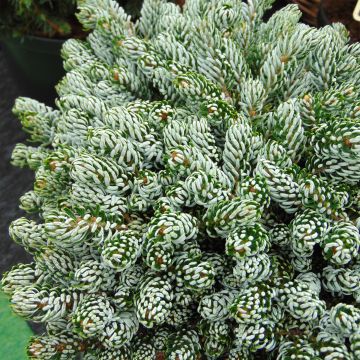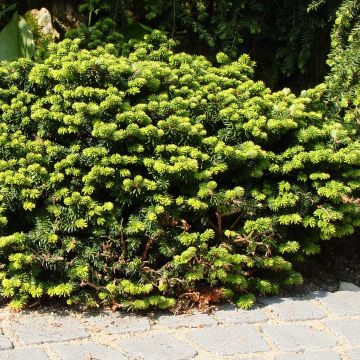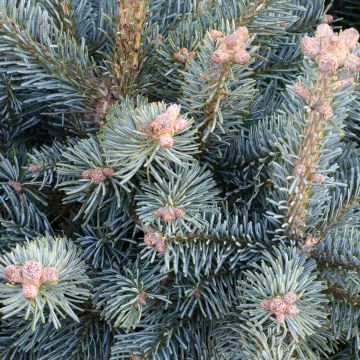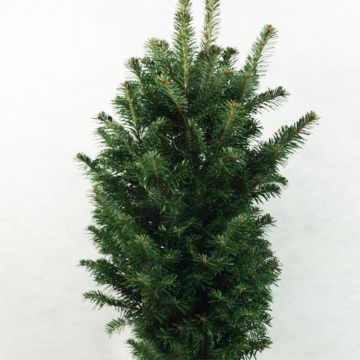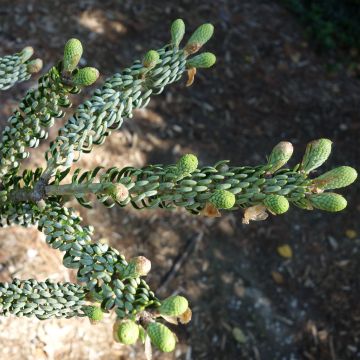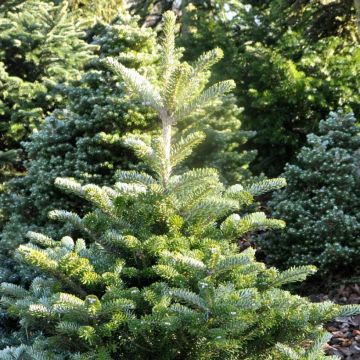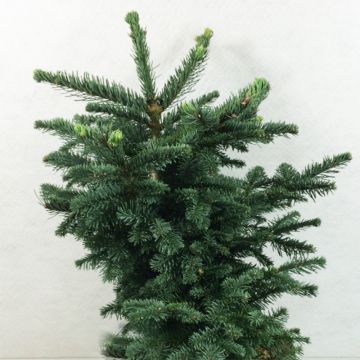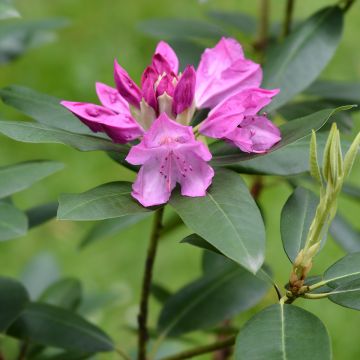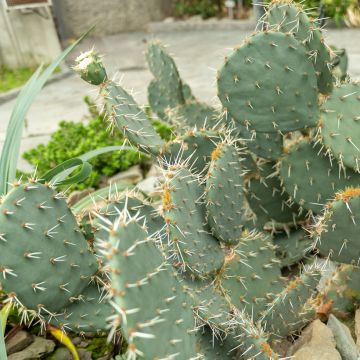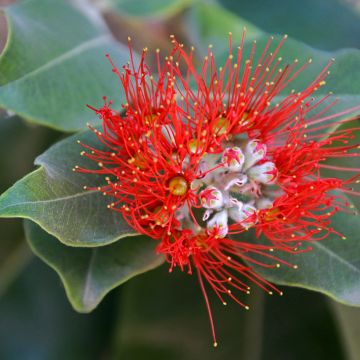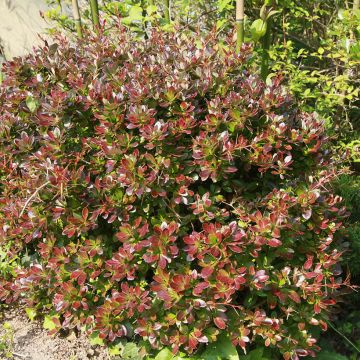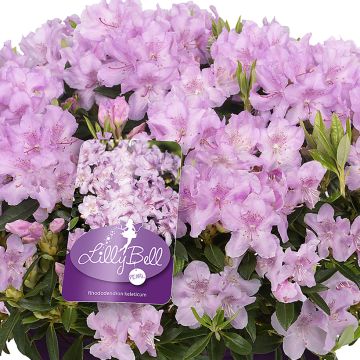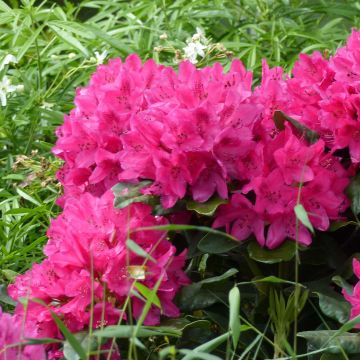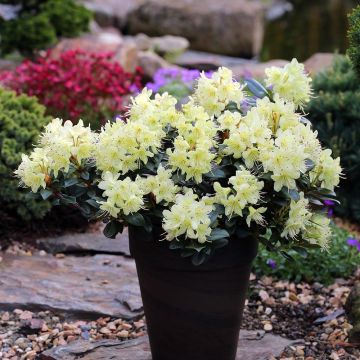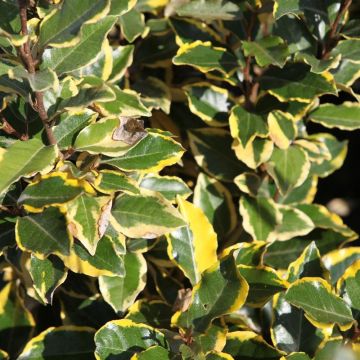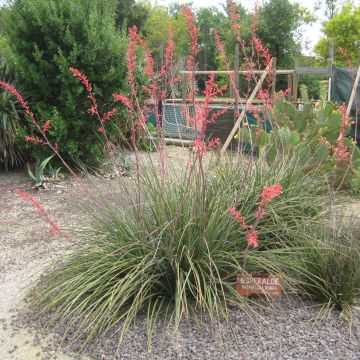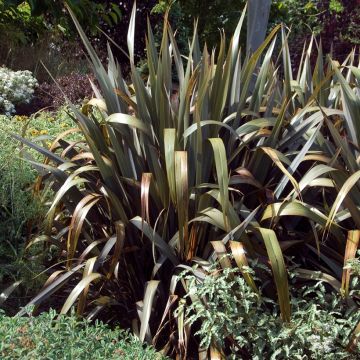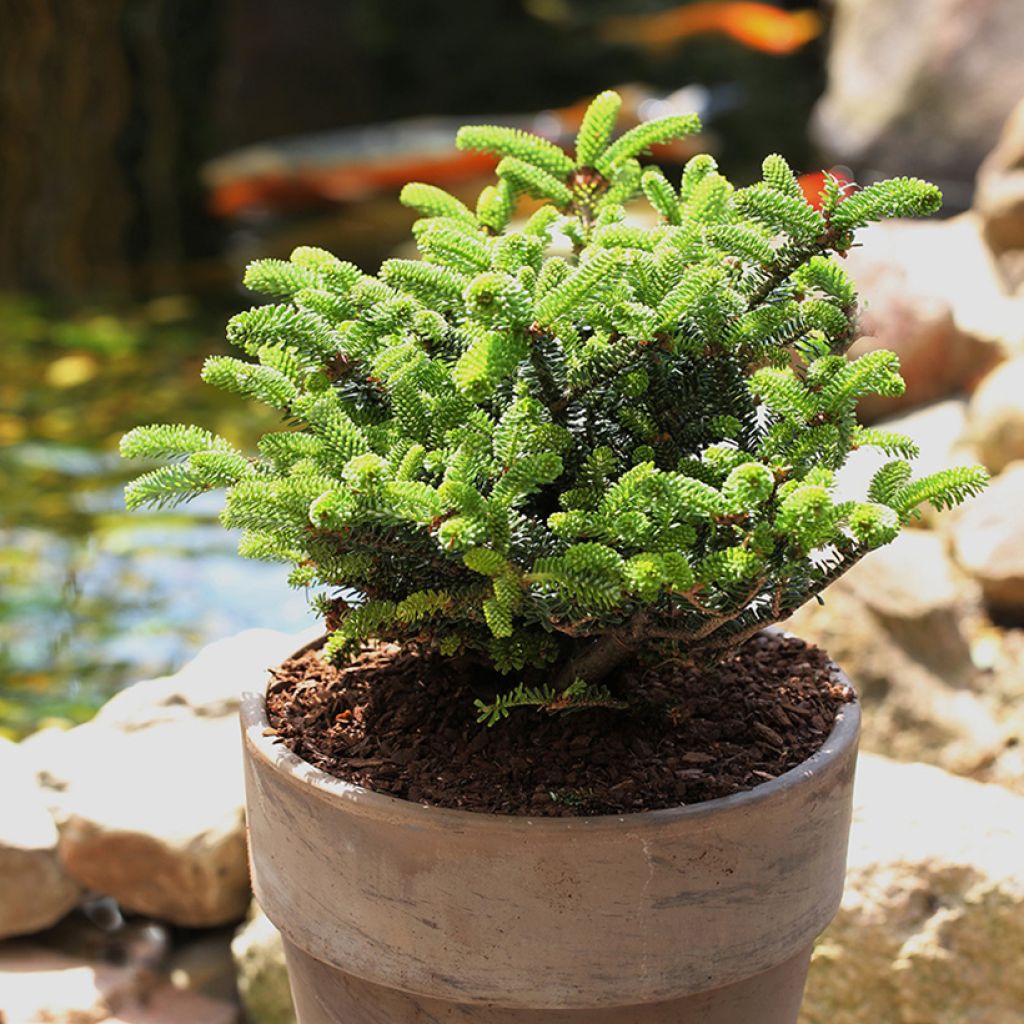

Sapin de Corée nain - Abies koreana Oberon
Abies koreana Oberon - Korean Fir
Abies koreana Oberon
Korean Fir
This item cannot be shipped to the selected country
Delivery charge from €5.90
More information
Schedule delivery date,
and select date in basket
This plant carries a 24 months recovery warranty
More information
We guarantee the quality of our plants for a full growing cycle, and will replace at our expense any plant that fails to recover under normal climatic and planting conditions.
From €5.90 for pickup delivery and €6.90 for home delivery
Express home delivery from €8.90.
Does this plant fit my garden?
Set up your Plantfit profile →
Description
Abies koreana 'Oberon' is a dwarf variety of Korean fir that has particularly short needles and a very dark green colour. Initially ball-shaped, this conifer rises over time to form a small, somewhat irregular, compact, and fairly wide but elegant pyramid. The small, prominent white buds that form at the end of the branches in winter contrast well with its dark foliage. With very slow growth and small size, this fir is perfect for small gardens, rock gardens, or in containers, in well-drained, moist soil, sheltered from excessive sunlight.
The Korean fir, in Latin Abies koreana, is a conifer of the pine family. This species is native only to the mountains of extreme southern Korea and has become rare in its home country. This small conifer reaches a height of 6 to 9 m (20 to 29ft) in its natural environment and has a compact habit. The cultivar 'Oberon' is a small horticultural selection. Its annual growth is around 5 cm (2in). The "young" plants, up to 10 years old, have a very dense, more or less irregular, ball shape. They measure around 60 cm (24in) in all directions. Its branches are remarkably thin and highly divided. As a stronger and more vertical branch develops on older plants, this conifer gradually takes on a more conical habit. The lateral branches vary in size, giving the vegetation an irregular appearance. Ultimately, "Oberon" generally reaches 1.50 m (5ft) in height by 0.8 to 1 m (3ft) in width. The foliage consists of very short, fairly wide, and flexible needles, very dark green on the upper side and lighter on the underside. Small white buds form in late winter, which will produce young shoots in a lighter green in spring.
Abies koreana 'Oberon' is ideal for small gardens thanks to its slow growth and small size. With its fir-tree shape and no need for pruning, it will work well in a rock garden, planted as a solitary specimen. This variety is also well suited for container cultivation on a terrace. Its shape fits well with Japanese-inspired, contemporary, or more classic styles. The architectural qualities of dwarf conifers deserve to be invited more often into our gardens, where they provide permanent structure. These are rather discreet plants in summer but become prominent again in winter when flowering is rare. They mark pathways, line terraces, and accentuate the corners of large shrub borders. To accompany the Korean fir Oberon, choose, for example, a ground-covering conifer such as Juniperus Blue Carpet, or a variety that forms a ball, such as Pinus mugo Varella. Grasses complement conifers very well. Consider Stipa tenuifolia, Pennisetum Hameln Gold, or Miscanthus Apetitiv, for example.
Report an error about the product description
Plant habit
Foliage
Botanical data
Abies
koreana
Oberon
Pinaceae
Korean Fir
Cultivar or hybrid
Other Abies
Planting and care
Plant the 'Oberon' Korean Fir from September to November or from February to June, in well-drained, even rocky and stony soil, enriched with humus, not too dry, in dappled sunlight or partial shade. This conifer is sensitive to heat and scorching sun. Regularly water the young plants during the two to three summers following planting. The Korean fir should be watered during extended periods of high heat. This bush does not require pruning, but any unsightly or obstructive branches can be removed to enhance its shape.
Planting period
Intended location
Care
This item has not been reviewed yet - be the first to leave a review about it.
Evergreen shrubs
Haven't found what you were looking for?
Hardiness is the lowest winter temperature a plant can endure without suffering serious damage or even dying. However, hardiness is affected by location (a sheltered area, such as a patio), protection (winter cover) and soil type (hardiness is improved by well-drained soil).

Photo Sharing Terms & Conditions
In order to encourage gardeners to interact and share their experiences, Promesse de fleurs offers various media enabling content to be uploaded onto its Site - in particular via the ‘Photo sharing’ module.
The User agrees to refrain from:
- Posting any content that is illegal, prejudicial, insulting, racist, inciteful to hatred, revisionist, contrary to public decency, that infringes on privacy or on the privacy rights of third parties, in particular the publicity rights of persons and goods, intellectual property rights, or the right to privacy.
- Submitting content on behalf of a third party;
- Impersonate the identity of a third party and/or publish any personal information about a third party;
In general, the User undertakes to refrain from any unethical behaviour.
All Content (in particular text, comments, files, images, photos, videos, creative works, etc.), which may be subject to property or intellectual property rights, image or other private rights, shall remain the property of the User, subject to the limited rights granted by the terms of the licence granted by Promesse de fleurs as stated below. Users are at liberty to publish or not to publish such Content on the Site, notably via the ‘Photo Sharing’ facility, and accept that this Content shall be made public and freely accessible, notably on the Internet.
Users further acknowledge, undertake to have ,and guarantee that they hold all necessary rights and permissions to publish such material on the Site, in particular with regard to the legislation in force pertaining to any privacy, property, intellectual property, image, or contractual rights, or rights of any other nature. By publishing such Content on the Site, Users acknowledge accepting full liability as publishers of the Content within the meaning of the law, and grant Promesse de fleurs, free of charge, an inclusive, worldwide licence for the said Content for the entire duration of its publication, including all reproduction, representation, up/downloading, displaying, performing, transmission, and storage rights.
Users also grant permission for their name to be linked to the Content and accept that this link may not always be made available.
By engaging in posting material, Users consent to their Content becoming automatically accessible on the Internet, in particular on other sites and/or blogs and/or web pages of the Promesse de fleurs site, including in particular social pages and the Promesse de fleurs catalogue.
Users may secure the removal of entrusted content free of charge by issuing a simple request via our contact form.
The flowering period indicated on our website applies to countries and regions located in USDA zone 8 (France, the United Kingdom, Ireland, the Netherlands, etc.)
It will vary according to where you live:
- In zones 9 to 10 (Italy, Spain, Greece, etc.), flowering will occur about 2 to 4 weeks earlier.
- In zones 6 to 7 (Germany, Poland, Slovenia, and lower mountainous regions), flowering will be delayed by 2 to 3 weeks.
- In zone 5 (Central Europe, Scandinavia), blooming will be delayed by 3 to 5 weeks.
In temperate climates, pruning of spring-flowering shrubs (forsythia, spireas, etc.) should be done just after flowering.
Pruning of summer-flowering shrubs (Indian Lilac, Perovskia, etc.) can be done in winter or spring.
In cold regions as well as with frost-sensitive plants, avoid pruning too early when severe frosts may still occur.
The planting period indicated on our website applies to countries and regions located in USDA zone 8 (France, United Kingdom, Ireland, Netherlands).
It will vary according to where you live:
- In Mediterranean zones (Marseille, Madrid, Milan, etc.), autumn and winter are the best planting periods.
- In continental zones (Strasbourg, Munich, Vienna, etc.), delay planting by 2 to 3 weeks in spring and bring it forward by 2 to 4 weeks in autumn.
- In mountainous regions (the Alps, Pyrenees, Carpathians, etc.), it is best to plant in late spring (May-June) or late summer (August-September).
The harvesting period indicated on our website applies to countries and regions in USDA zone 8 (France, England, Ireland, the Netherlands).
In colder areas (Scandinavia, Poland, Austria...) fruit and vegetable harvests are likely to be delayed by 3-4 weeks.
In warmer areas (Italy, Spain, Greece, etc.), harvesting will probably take place earlier, depending on weather conditions.
The sowing periods indicated on our website apply to countries and regions within USDA Zone 8 (France, UK, Ireland, Netherlands).
In colder areas (Scandinavia, Poland, Austria...), delay any outdoor sowing by 3-4 weeks, or sow under glass.
In warmer climes (Italy, Spain, Greece, etc.), bring outdoor sowing forward by a few weeks.

































